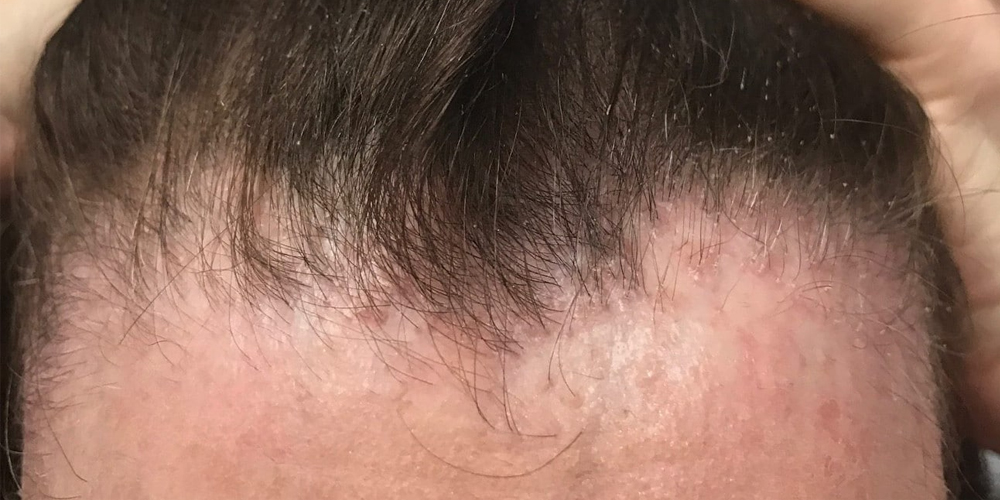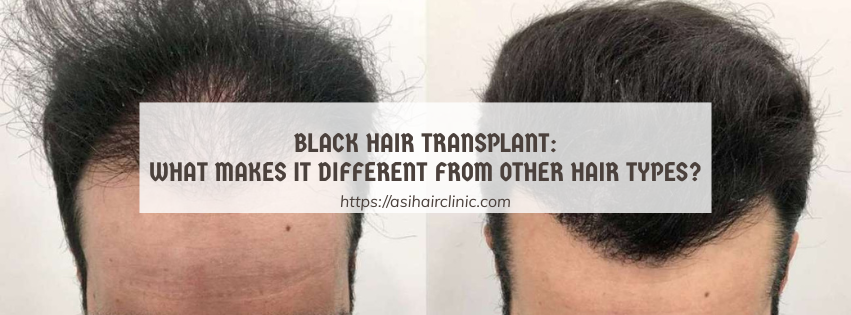What is Frontal Fibrosing Alopecia?
Frontal fibrosing alopecia (FFA) is an enigmatic and distressing condition that has garnered increasing attention in recent years. With a distinct pattern of hair loss primarily affecting the frontal hairline and temples, many individuals are left grappling with not only the physical implications but also the emotional burdens this form of scarring alopecia can impose. While research continues to unfold surrounding its underlying mechanisms, treatment options remain limited, often leaving those affected searching for answers and solutions. This article aims to explore the multifaceted aspects of FFA, delving into its causes, symptoms, diagnosis, treatment options, and ongoing research, creating a comprehensive narrative around this intriguing condition.
1. Understanding Scarring Alopecia and Frontal Fibrosing Alopecia
To truly appreciate the significance of frontal fibrosing alopecia, one must first understand the broader category of scarring alopecia, under which it falls. Alopecia, in general, refers to hair loss, but scarring alopecia involves a more severe process where hair follicles sustain permanent damage, ultimately leading to irreversible hair loss due to the formation of scar tissue. Such a transformation means that regrowth in the affected areas is no longer possible, making scarring alopecia a particularly challenging condition for those who experience it.
In the case of frontal fibrosing alopecia, the pattern of hair loss presents distinctly. The hallmark features of this condition include:
1.1. Frontal Hairline Recession
FFA's most striking manifestation is the gradual recession of the frontal hairline. Often beginning subtly, individuals may notice their hairline slowly retracting over time. This characteristic change typically results in an ‘M’ or ‘U’ shaped appearance, as defined by the symmetric nature of the recession along the forehead.
1.2. Temporal Involvement
Beyond just the frontal hairline, FFA commonly extends its reach to the temporal regions of the scalp. This involvement exacerbates the receding shape, further contributing to the altered aesthetics of the individual’s appearance.
1.3. Eyebrow Thinning
Another noteworthy symptom of FFA is eyebrow thinning. Many individuals afflicted with this condition report significant loss of eyebrow density or even complete disappearance of certain sections. This can lead to feelings of self-consciousness, as the eyebrows contribute significantly to facial framing and expression.
1.4. Changes in Facial Skin
In addition to hair loss, some patients experience notable changes in the skin surrounding the receding hairline. These changes could manifest as redness, scaling, or a thickening of the skin texture, indicating inflammation and potential damage within the affected area.
Understanding these fundamental characteristics lays the groundwork for differentiating FFA from other hair loss disorders. Distinguishing between various forms of alopecia is crucial for effective management and treatment, as the approaches employed are highly dependent on the specific condition at hand.

2. Investigating the Causes of Frontal Fibrosing Alopecia
The quest to unravel the underlying causes of frontal fibrosing alopecia remains ongoing, as researchers investigate the interplay of various factors contributing to this perplexing condition. Although the precise etiology is not fully understood, several hypotheses have emerged:
2.1. Autoimmune Component
A prevailing theory posits that FFA may represent an autoimmune disorder. In autoimmune conditions, the body’s immune system mistakenly targets its own tissues-in this case, the hair follicles. Clinical observations reveal the presence of immune cells in affected areas, suggesting that the immune response may play a central role in follicle destruction. Intriguingly, individuals with FFA often present with concurrent autoimmune conditions, like vitiligo and autoimmune thyroid disease, lending further credence to this hypothesis.
2.2. Genetic Predisposition
Emerging evidence suggests that genetics may also be at play in the development of FFA. Some individuals appear to possess a hereditary susceptibility, implying a genetic tendency toward the condition. Ongoing research aims to identify specific genes associated with FFA, potentially illuminating aspects of its pathogenesis and paving the way for novel therapeutic approaches.
2.3. Environmental Factors
Environmental triggers may also contribute to the onset of FFA, although concrete conclusions remain elusive. Factors such as exposure to certain chemicals, infectious agents, or hormonal changes could potentially precipitate the condition in genetically predisposed individuals. Further investigations are required to clarify the impact of these environmental components on FFA's development.
2.4. Medications
Interestingly, certain medications have been correlated with the onset of FFA in some patients. Notably, drugs containing lithium and anti-malarial medications have been identified as potential culprits. While the exact mechanisms through which these medications influence hair follicles remain unclear, such associations warrant careful consideration in patients presenting with unexplained hair loss.
2.5. Lichen Planopilaris Connection
Lichen planopilaris (LPP), a related condition, exhibits similarities with FFA. Some researchers propose that FFA could represent a variant or milder form of LPP. Both conditions share common histological features, and understanding this relationship may provide insight into developing targeted therapies for both disorders.
3. Recognizing Symptoms and Signs of Frontal Fibrosing Alopecia
Identifying the symptoms and signs of frontal fibrosing alopecia plays a pivotal role in early detection and intervention. While the primary symptom is the gradual and progressive hair loss impacting the frontal hairline and temples, there are additional indicators that may aid recognition:
3.1. Gradual Receding Hairline
Typically, the first noticeable sign of FFA is a gradual retraction of the hairline. This recession is often so subtle that individuals may initially attribute it to natural aging processes or lifestyle factors. However, as this progression continues, it becomes increasingly evident and may prompt concern.

3.2.Eyebrow Changes
Alongside hair loss at the hairline, many individuals experience thinning or patchy eyebrows. This particular symptom can significantly impact self-esteem and enhance feelings of vulnerability regarding personal appearance.
3.3. Skin Alterations
Affected areas may undergo pronounced skin changes, including inflammation, redness, and thickened texture. These alterations can cause discomfort, such as itching or sensitivity, and may serve as visible markers of the inflammatory process occurring beneath the surface.
3.4. Scar Formation
As FFA progresses, the affected regions develop scarring, which signifies the permanent hair loss that characterizes scarring alopecia. The presence of scars makes it impossible for hair to regrow in those locations, solidifying the importance of early intervention to manage symptoms effectively.
3.5. Scalp Involvement
In rare cases, FFA can extend beyond the frontal and temporal areas, involving the scalp more extensively. Such occurrences may result in widespread hair loss that poses additional challenges for management and aesthetic concerns.
Recognizing these symptoms is essential for patients seeking timely medical advice and potential treatment options. Individuals experiencing any combination of these indicators should consult with a dermatologist or hair loss specialist for an accurate diagnosis and guidance.
4. Diagnosing Frontal Fibrosing Alopecia: Navigating the Diagnostic Process
Given the subtle nature of FFA's onset, diagnosing this condition necessitates a thorough evaluation by qualified healthcare professionals. The diagnostic process typically comprises several key steps:
4.1. Physical Examination
A dermatologist will begin with a comprehensive physical examination of the scalp and hair, assessing for the characteristic patterns of hair loss, signs of inflammation, and associated skin changes. It is essential for the clinician to recognize the unique features that differentiate FFA from other hair loss disorders.
4.2. Medical History Review
Obtaining a detailed medical history is crucial to understanding the patient's background. Clinicians will inquire about any existing autoimmune conditions, medication use, and family history of hair loss. Such information can provide valuable insights into potential underlying factors contributing to the hair loss.
4.3. Scalp Biopsy
In some cases, a scalp biopsy may be warranted to confirm the diagnosis. By excising a small sample of skin from the affected area, pathologists can analyze it under a microscope to detect specific histological features typical of FFA. This procedure enhances diagnostic precision and facilitates differential diagnosis.
4.4. Blood Tests
While blood tests are not invariably required for FFA diagnosis, they can assist in ruling out associated autoimmune conditions. Tests evaluating thyroid function and the presence of autoimmune markers can guide clinicians in determining the patient’s overall health and risk factors.
Establishing a precise diagnosis allows for tailored treatment strategies and empowers patients to make informed decisions about their care. Early intervention is instrumental in managing symptomatology, slowing progression, and enhancing quality of life.

5. Treatment Options for Frontal Fibrosing Alopecia: Managing the Condition
Currently, there is no definitive cure for frontal fibrosing alopecia, and treatment options primarily focus on managing symptoms and attempting to slow the progression of hair loss. Several therapeutic modalities exist:
5.1. Topical Corticosteroids
Topical corticosteroids are among the first-line treatments for FFA. When applied to affected areas, these medications can help reduce inflammation and slow down the rate of hair loss. However, it is important to note that while they may alleviate some symptoms, they might not completely halt the disease’s progression for every patient.
5.2. Intralesional Corticosteroids
For individuals seeking a more targeted approach, intralesional corticosteroid injections are an option. Injecting corticosteroids directly into the affected scalp can deliver potent anti-inflammatory effects, potentially yielding better outcomes than topical applications alone. However, the variability in individual responses to treatment should be expected.
5.3. Immunosuppressants
Medications like minocycline and hydroxychloroquine are sometimes prescribed as immunosuppressants to reduce the immune response attacking hair follicles. This strategy aims to mitigate the autoimmune component believed to contribute to FFA. While evidence supporting the efficacy of these drugs is limited, some patients find success in utilizing them as part of their management plan.
5.4. Other Topical Treatments
Alternative topical agents, such as tacrolimus (Protopic) and pimecrolimus (Elidel), initially designed to treat eczema, have shown promise in some cases of FFA. These agents work by modulating the immune response and may help manage symptoms if traditional corticosteroids have proven ineffective.
5.5. Hair Transplantation
Under specific circumstances, hair transplantation may be considered for individuals whose hair loss has stabilized without significant scarring. This technique involves relocating hair follicles from unaffected areas of the scalp to the frontal hairline. However, it’s vital to remember that transplantation does not provide a cure for FFA, and ongoing disease progression can jeopardize the longevity of the transplanted hair.
5.6. Exploring Alternative Therapies
Some anecdotal reports suggest that alternative therapies, such as platelet-rich plasma (PRP) injections, could promote hair growth within scarred areas. However, substantial clinical studies are needed to delineate the effectiveness and safety profile of such interventions before widespread recommendations can be made.
Despite the limitations of current treatment options, patients benefit from the active pursuit of therapies tailored to their needs. Collaborating with a knowledgeable healthcare provider enables individuals to explore a range of possibilities and establish a regimen that best addresses their unique circumstances.
Conclusion
Frontal fibrosing alopecia remains a complex and evolving condition that presents unique challenges to both patients and healthcare providers alike. The intricate interplay of autoimmune responses, genetic susceptibility, and environmental factors contributes to the enigma of this condition. Through continued education, research, and compassionate support, those affected by FFA can navigate their journey towards management and healing. As our understanding deepens and the landscape of treatment options expands, there is hope for enhanced quality of life for individuals contending with this distinctive form of hair loss.
LATEST POSTS








